FROM NATURAL HEALTH AND BACK AGAIN
How did we get here?
by Boyd Martin
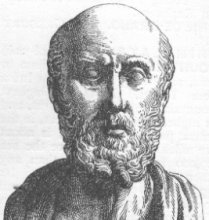 It was Hippocrates, nearly 2400 years ago, who put forth the most influential ideas about human health and the creating and preserving of it. His observations and reasoning have formed the basic underpinnings of modern medicine, yet his approaches to actual medical conditions would be defined today as "alternative." Hippocrates espoused such "alternative" ideas as:
It was Hippocrates, nearly 2400 years ago, who put forth the most influential ideas about human health and the creating and preserving of it. His observations and reasoning have formed the basic underpinnings of modern medicine, yet his approaches to actual medical conditions would be defined today as "alternative." Hippocrates espoused such "alternative" ideas as:
∑ The natural healing power of the human body.
∑ The importance of eating wholesome unadulterated foods.
∑ The effect of thoughts and feelings on the health of the body.
Yet, as time wore on, the teachings of Hippocrates were forgotten, with men of medicine reverting to dogmatic and fatalistic approaches to disease, using astrology, numerology and religious superstitions. Disease prevention and even daily hygiene were dismissed.
Enter Paracelsus, in the first half of the 16th Century, who attacked the dogmatic belief of his modern doctors that the human body is controlled exclusively by the stars and the planets. He insisted upon the right to discover latent powers of nature by daring to use his faculties of observation and imagination. He stressed the healing power of nature, and raged against modern methods, such as wound treatment that prevented natural drainage of bodily fluids.
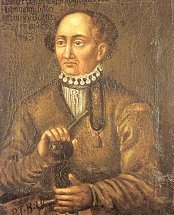 Paracelsus was particularly interested in the role earth elements--metals and minerals--played in the human body. He was the first to connect goiter with lead in drinking water. He correctly maintained that minerís disease (silicosis) resulted from inhaling metal vapors. Doctors and clerics at the time maintained that minerís disease was a punishment for sins.
Paracelsus was particularly interested in the role earth elements--metals and minerals--played in the human body. He was the first to connect goiter with lead in drinking water. He correctly maintained that minerís disease (silicosis) resulted from inhaling metal vapors. Doctors and clerics at the time maintained that minerís disease was a punishment for sins.
As Europe emerged from the Middle Ages, and industrialization became the new cornucopia, technology leapt forward in the areas of mass production and building conveniences, exporting its promise of riches and luxury to America. As big factories were built, and cities arose, people worked and lived in close proximity. Efficiency for profit had become the battle cry of the new corporation, yet the medical establishment responsible for the health of the workers were still stuck in the Middle Ages. The concept of hygiene was considered heretical as late as the 1850's, until such humanitarians as Florence Nightingale put forth such bold yet sensible statements as: "The specific disease doctrine is the grand refuge of weak, uncultured, unstable minds, such as now rule in the medical profession. There are no specific diseases; there are specific disease conditions," referring to overcrowding, filth, and lack of sunshine and fresh air in hospitals.
Soon the commercialization of chemical treatments for "specific disease conditions" ran full-steam ahead into the present day. The seemingly idealistic propositions of Hippocrates just aren't profitable to industrialized medicine, and the power of profit is a heady temptation to young graduating medical students.
With the advent of fast and convenient global communications and transportation--not to mention the Internet--the Real Medicine of Hippocrates, Paracelsus and Florence Nightingale is making more and more common sense to the general public, despite apparently endless deep pockets of the drug corporation's media blitzes. There is hope for Human Health on Planet Earth, and in honor of this Hope, we salute those who created it.
Pioneers of the North American Natural Health Movement
(Thank you to Alive Journal)
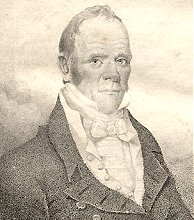 Samuel Thomson (1769-1843)
Samuel Thomson (1769-1843)
Samuel Thomson was one of the most important figures in the history of medical herbalism. He gained his knowledge about herbs from neighbors and through his own observations in his native New Hampshire. He developed a system of medicine which, in the first third of the nineteenth century, The two main pillars of his system were the vomit-inducing herb lobelia, which he employed as a counter-poison, and heat as a method for curing disease. This led detractors to call his system the "steam-and-puke method." Thomson was a marketing genius who patented his system, and sold it for twenty dollars per family. It is estimated that over three million Americans were following his health methods by 1839. Thomson spent much time and energy in legal battles, and was the first person to publicly attack modern medicine in the US. He was the most politically powerful herbalist in history, successfully pressing legislatures to drop license requirements for medical practice. His Formula No. 6, capsicum myrrh tincture, made it to the United States Pharmacopoeia, and is still used by herbalists today.
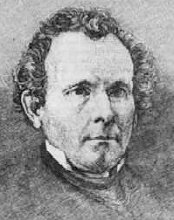 Sylvester Graham (1794-1851)
Sylvester Graham (1794-1851)
Sylvester Graham shocked the Victorian society of his day by preaching a vegetarian lifestyle. In lectures and in his Treatise on Bread and Breadmaking (1837), Graham extolled the virtues of bulk matter in food, over a hundred years before the importance of dietary fiber became widely recognized. His original "Graham Bread" was the centerpiece of a vegetarian diet created with the intent of suppressing carnal urges, which he believed were the source of many maladies. He also warned that ketchup and mustard caused insanity. He gained many followers, who set up boardinghouses in cities including New York and Boston, where his vegetarian diet was observed. Graham taught his followers how to make their own bread at home, and as a result, the commercial bakers viewed this as a threat to their own livelihood. In 1847, bakers and butchers stormed the hall in Boston where Graham was speaking. This incident led to Graham's retirement. He never spoke in public again, and lived in Northampton, Massachusetts, until his death at age fifty-seven. Graham crackers have long since ceased to be considered a health food, but they have remained popular as a snack food. Today, Graham crackers are made with much greater amounts of sugar and other sweeteners than used in the original recipe. Cinnamon is also commonly added to Graham cracker mix to enhance the flavor.
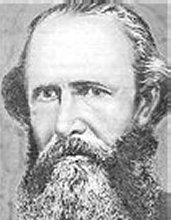 Russell Thacker Trall (1812-1877)
Russell Thacker Trall (1812-1877)
Russell Thacker Trall, medical practitioner, educator and writer, was a dynamic pioneer of hydrotherapy and natural hygiene. Born the son of a Connecticut farmer, he completed a medical degree and opened a water-cure house in New York City in 1844, where he demonstrated his alternative to modern medicine's drug treatments. His institute was a cross between an urban health farm and a boarding house, offering plain vegetarian meals, hydrotherapy treatments, a gymnasium, public rooms and, starting in the 1860s, a health food shop selling whole grains, cereals, Graham bread (Trall was a friend of Graham), and his books on food reform, hygiene, sex and physiology. In 1853, Trall established the New York Hydropathic School. Here he taught that mainstream medicine required a revolution--a vision of health as an active state to be positively achieved by methods learned from nature. His students learned water treatment and nutrition, the virtues of self-discipline and emotional, sexual and physical moderation, as well as procedures like mesmerism and magnetism. Trall was one of the strongest proponents of water cure, but in time he became critical of the excesses which sometimes marked hydropathic treatments. Significantly, the school was renamed the New York Hygieo-Therapeutic College when it was chartered in 1957. The word "hygienic" came to replace "hydropathic" in Trall's characterization of his alternative medicine. He wrote a definitive description of the philosophy and methods of his school in a small book called The Hygienic System. Trall wrote over forty books, the most ambitious being the Hydropathic Encyclopedia. He edited several reviews including the Water Cure Journal, later called the Herald of Health, to which he was by far the most prolific contributor.
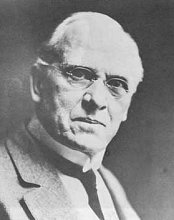 John H. Tilden (1851-1940)
John H. Tilden (1851-1940)
With his theory of toxemia, or infectious bacteria, John Tilden recognized the role of stress in causing disease long before this became an accepted idea. Tilden practiced medicine for years before losing faith in drugs and searching for a new understanding of disease. He observed that health is impaired when a person's nervous energy becomes dissipated and the body is no longer able to properly eliminate the toxic by-products of metabolism. The resulting state of self-intoxication, or toxemia, was regarded by Tilden as the single underlying cause of impaired health. He considered individual diseases to be nature's cleansing efforts, or crises of toxemia. According to Tilden, nervous energy could become toxic by eating the wrong foods, by overeating, by taking too many stimulants such as coffee and alcohol, and by other sources of stress such as emotional and mental strains. Tilden opened a school in Denver, Colorado, next to a sanatorium that attracted patients from all over the world. Treatment began with a fast. Tilden gave his patients diets tailored to their individual needs. He was a strict disciplinarian who wasted no time on those who would not relinquish degenerative habits. Tilden also wrote between three and seven o'clock almost every morning. He published a monthly magazine called Philosophy of Health, which was later renamed Health Review and Critique, and he refused all advertising in his magazine. Tilden was an important influence on Henry Bieler, author of the highly popular book Food Is Your Best Medicine.
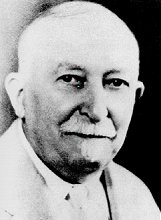 John Harvey Kellogg (1855-1946)
John Harvey Kellogg (1855-1946)
John Harvey Kellogg was an important promoter of vegetarianism and founder of the Battle Creek health center. He is the author of the most comprehensive American textbook on hydrotherapy, Rational Hydrotherapy. Kellogg was a leading member of the American Medical Association, but he cured tuberculosis patients with a natural foods vegetarian diet, water, fresh air and sunshine, enraging the Association. His patients were called "visitors," and they were encouraged to walk, swim, play tennis and listen to music. Their diet consisted mainly of yogurt, honey, buttermilk, salads, fruits, cheese, nuts and whole wheat bread. His famous visitors included Henry Ford, John Rockefeller and Franklin D. Roosevelt. Kellogg's brother, Will, developed shredded wheat, cornflakes, granola biscuits and other health foods for those who had been visitors at his brother's health center. He also invented peanut butter, which was first sold exclusively to Seventh Day Adventists. Through these ventures, Will Kellogg became one of the richest men in the US.
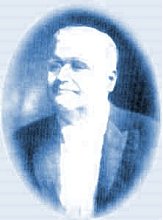 Henry Lindlahr (1862-1924)
Henry Lindlahr (1862-1924)
Henry Lindlahr, one of the most successful early American nature doctors, was a rich, corpulent Montana business tycoon in his mid-thirties when he was diagnosed with incurable diabetes and advised by physicians to prepare for his death. Instead, inspired by The New Science of Healing by Louis Kuhne and a visit to a Kneipp clinic in his native Germany, Lindlahr began to apply natural healing methods to himself. Ten years later, completely cured, he had earned a degree in medicine and opened his own sanatorium in Chicago, dedicated to curing chronic disease by natural methods. Lindlahr believed that chronic disease was caused by the accumulation of waste matter and poisons in the body, and that acute disease was nature's way of cleansing the body. Chronic disease, according to Lindlahr, was often the result of the repression of acute disease. He often applied his knowledge of the psychoanalytical techniques of Jung and Adler, since some of his patients were mentally disturbed. He believed in the power of the mind and considered fear to be the greatest enemy of health. Besides the sanatorium in Chicago, Lindlahr ran a second treatment center in a homestead on eight acres of parkland in Elmhurst, Illinois. He established his own college of medicine in Chicago next to his sanatorium, and published and edited the Nature Cure Magazine. His book Nature Cure, a clear and concise account of naturopathic philosophy and methods, was in its twentieth edition by 1922. Sadly, his first lecture tour ended prematurely when he contracted blood poisoning after a foot injury, and he died as a result of complications from the amputation of his leg.
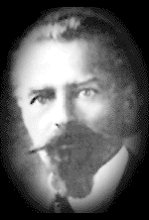 Arnold Ehret (1866-1922)
Arnold Ehret (1866-1922)
As a young man, he suffered from Bright's disease, the principal symptoms being mucus and albumin in the urine. In his search for a cure, Ehret traveled through Europe and Africa studying vegetarianism, naturopathy, medicine, and physiology. While in North Africa, eating primarily fruits, and fasting, he regained his vitality. Back in Europe, he began lecturing and writing on his successes treating himself and others, and opened a health center in Switzerland before moving to Los Angeles. There, Benedict Lust applied Ehret's diet to his own work, and published his books, including The Mucusless Diet Health System and The Story of My Life. Ehret believed that disease is caused mainly by constipation. The goal of his therapy is to get rid of wastes by eating foods that do not cause obstruction and by fasting occasionally. The mucus-free foods he advocated were fruits (raw and cooked), nuts, and green leafy vegetables. Ehret believed in the value of undereating. His belief in the therapeutic value of occasional fasting led him to maintain that breakfast should be postponed as far into the day as possible. Unfortunately for the health world, Ehret suffered a fatal head injury after slipping on wet pavement. He was only 57.
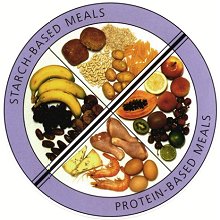 William Howard Hay (1866-1940)
William Howard Hay (1866-1940)
The American medical doctor Howard Hay turned to natural medicine when he became very ill with Bright's disease and cured himself by changing his diet. He ate food only in its natural form and only as much as necessary. He also found it important to respect what he called the immutable laws of chemistry, combining foods that had compatible digestive chemistry--no starch with protein, but rather starch with fruits and vegetables at one meal, and protein with fruits and vegetables at another meal. He argued that starch needs an alkaline digestive environment, whereas protein needs an acid environment for its digestion. The Hay Diet became the basis of Hay's therapy. He wrote A New Health Era and How To Always Be Well. He taught that an organ needs healthy cells to function, and that healthy cells can only be built up through proper nutrition. Hay thought the correct acid-alkaline balance in the body was particularly important. Our bodies are usually in a state of unbalance due to too many acid-forming foods, such as proteins and carbohydrates. He recommended eating fewer proteins and starches, and more fruits and vegetables. He cured himself completely, and was healthy until he died at age seventy-four in a traffic accident. [ADDRESS TO THE MEDICAL FREEDOM SOCIETY, 1937]
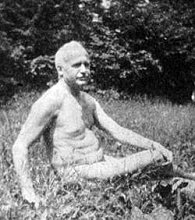 Benedict Lust (1872-1945)
Benedict Lust (1872-1945)
Like so many other nature healers, Lust started on his path because of an important personal experience. In his twenties, Lust went to New York City to seek his fortune and contracted serious tuberculosis. An American physician filled out his death certificate in his presence, and Lust returned to his native Germany to die. There, he managed to visit Father Sebastian Kneipp, and after submitting to Kneipp's hydrotherapy, Lust was cured in eight months. In 1896, he obtained from Kneipp the authorization to carry his methods to the US, where he subsequently founded a clinic, a school, a Kneipp store, and a naturopathic health retreat in the Ramapo mountains near Butler, New Jersey. He Americanized the Kneipp method by complementing it with therapies like a natural diet, sun and air baths, massage, electrotherapy, physical culture and suggestive therapeutics. He believed that all disease arises from one cause, the violation of nature's laws, and that all of nature's various agents can and should be applied to correct it, writing several books on his views. Although Lust sought to diffuse some of the hostility of mainstream doctors by studying medicine, he was brought to court countless times. He was hounded by the New York County Medical Association, and was arrested sixteen times by the New York authorities, and three times by federal authorities. Lust invested tens of thousands of dollars in fines and spent many hours in court and in jail, but he was not bitter, maintaining that prosecution and persecution are part of the life of a naturopath. It was in this context of persecution that the term "naturopathy" was adopted to designate the science of natural healing in the United States. The term was originally coined in 1892 by New York doctors when they combined the terms "nature cure" and "homeopathy" to describe their joint practice. The word naturopath was the only safe term by which they could designate themselves as associated with natural health. Lust realized that the only hope for American nature cure was to have it legitimized.
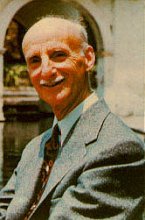 Norman Walker (1867-1985)
Norman Walker (1867-1985)
Norman Walker popularized fresh vegetable and fruit juices in the US and Canada. The English-born businessman discovered the value of vegetable juices while recovering from a breakdown in a peasant house in the French countryside. Watching the woman in the kitchen peel carrots, he noticed their moistness under the peel. He decided to try grinding them, and had his first cup of carrot juice. When he recovered, Walker moved to Long Beach, California. With a medical doctor, he opened a juice bar and offered home delivery service. From 1910 to 1930, they devised dozens of fresh juice formulas for specific conditions. Walker believed colon cleansing with fresh juices was the key to good health. Walker designed his own juicer, the Norwalk, in two parts--a grinder to grind the vegetables and a press to extract the juice. When the San Francisco health department banned unpasteurized vegetable juices, Walker began manufacturing his juice machine in Anaheim, California. He kept the plant going in spite of the steel shortage during World War II. In the late 1940s, he moved to Utah where he found an old cotton mill, ideal for his juice plant, but he was again hampered by health department regulations. He sold the factory to his two sons, and started publication of his own health magazine, The New Health Movement Review. For several years, Walker ran a health ranch in Arizona. Eventually he gave up the ranch to devote himself to writing. He lived to be 119 years old, and gave his fresh juices credit for his long, healthy life.
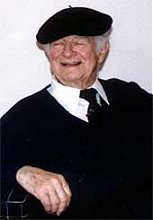 Linus Pauling (1902-1994)
Linus Pauling (1902-1994)
Linus Pauling was one of this century's great scientists, the only person ever to win two unshared Nobel prizes. He received his first Nobel Prize in 1954 for his work on the nature of the chemical bond. His second Nobel Prize, in 1962, was for laying the groundwork for the first Test-Ban Treaty among the US, Britain, and the Soviet Union. He and his wife mobilized scientists into a movement against nuclear weapons. In the late 1960s, Pauling became interested in nutrition and the role of vitamins. He began using vitamin C in 1966, and in 1970, he published his findings on the healing powers of vitamin C, in Vitamin C and the Common Cold. It was immediately accepted by lay readers, but scorned or ignored by the medical community. In 1986, he published How to Live Longer and Feel Better, a scathing indictment of the health care establishment which he dubbed "the sickness industry." Pauling's nutritional recommendations are relatively simple: take larger than RDA doses of the vitamins C, E, B-complex and A each day, along with mineral supplements; cut down on refined sugar; drink lots of water; do not smoke; exercise moderately; eat and drink in moderation; and adopt a non-stressful, happy lifestyle. Pauling was the honorary president of the American Orthomolecular Medical Association, whose members promote the use of conventional medical therapies in conjunction with vitamin supplements and nutritional therapy. He also founded the Linus Pauling Institute in Corvallis, Oregon.
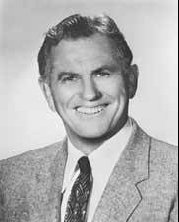 Paul Bragg (1881-1976)
Paul Bragg (1881-1976)
Paul Bragg was an energetic promoter of natural health and nutrition through health crusades, books, tapes, radio, TV and personal appearances. He was perhaps best known for his popularization of the beneficial effects of apple cider vinegar. Crippled by tuberculosis as a teenager, Bragg developed an eating, breathing, and exercise program of running, swimming, biking and weight training to rebuild his body. He made an early pledge to spend the rest of his life showing others the road to health in return for his recovery. His promotion of healthy living habits has since been marked by a religious zeal. Bragg opened the first health food store in the US, and inspired followers to do the same. He pioneered the nationwide availability of herb teas, health beverages, seven-grain cereals and crackers, health cosmetics, health candies, vitamins and minerals. He was the personal advisor on diet and fitness to top Olympic athletes, Hollywood stars and giants of American business. He broadcasted radio health programs from Hollywood and a TV show called "Health and Happiness." With his daughter Patricia Bragg, he ran the Longer Life, Health and Happiness Club in Hawaii. He died before his time at the age of 95 in a body-surfing accident. [Watch these great videos of marketing genius at work].
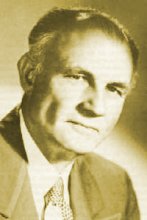 Herbert M. Shelton (1895-1985)
Herbert M. Shelton (1895-1985)
Herbert M. Shelton was the first president of the American Natural Hygienic Society, now called the National Health Association, which today publishes a bi-monthly magazine called Health Science and has chapters all over the world, the largest located in Toronto, Ontario. Shelton believed people possess their own healing powers, and devoted his life to teaching others how to live healthfully. He wrote more than forty books, published a monthly magazine called Dr. Shelton's Hygienic Review, and founded health schools in San Antonio, Texas. The road to his success was rough--during the Great Depression, his schools lacked money and, although he never claimed to be a physician, he and his followers suffered several arrests. Shelton promoted all aspects of healthy living--exercise, rest, clean water, fresh air, sunshine, emotional and mental poise, and a low-fat, low-protein vegetarian diet emphasizing raw fruits, nuts, and vegetables in proper combination and amounts. He occasionally recommended a limited period of water fasting for some of his patients. Shelton helped many sufferers of alcoholism, appendicitis, asthma, colitis, indigestion, kidney stones and pneumonia, whom modern medicine was unable to treat successfully.
 Adelle Davis (1904-1974)
Adelle Davis (1904-1974)
During her more than forty years as a consulting nutritionist and author of the best selling Let's... series of books on diet and health, Adelle Davis was a vociferous and relentless critic of North American eating habits. She also alleged a conspiracy among food processors, chemical and drug companies, and the government which promoted nutritional impoverishment. Like so many other pioneers, Adelle Davis was something of a prophet and a seer, or perhaps simply a keen and perceptive observer. Her assertion that thousands of people have never eaten genuinely wholesome food drew ridicule from the "conspirators" and from physicians and professional dietitians. Davis stuck to her guns however and insisted that rampant malnutrition among all classes of North American society was completely true. The sickness expectancy and the life expectancy of a family can be predicted with fair accuracy, she believed, by observing their cooking methods. But her message was upbeat and positive: everyone financially able to obtain a completely adequate diet can achieve perfect health, provided irreparable harm has not already been done. She freely acknowledged that obtaining such a diet in twentieth-century North America was no easy task, and believed our society's general health decline began with the Industrial Revolution, then accelerated sharply with the introduction of separation grain milling in 1862. Widespread post-World War II technological innovations in agriculture, food processing, and chemical use in the food supply further deteriorated health. She castigated the medical profession for its disregard of the symbiotic relationship between nutrition and human health, and for cooperating with the pill-pushing, profit-seeking, pharmaceutical industry. Ahead of her time again, she advised against giving antibiotics to children (or anyone) for routine, non-life-threatening illnesses. Davis also chided professional dieticians for asserting that white flour is just as nutritious as whole grain, and cited government data which showed that between fifty and one hundred percent of essential nutrients are lost in the milling process, while very little is returned in so-called enrichment.
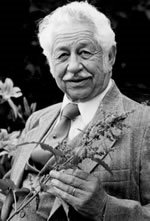 John Raymond Christopher (1909-1983)
John Raymond Christopher (1909-1983)
During World War II, Christopher became the US Army's only practicing herbalist. As a conscientious objector, he was placed in charge of a medical dispensary at Fort Lewis. After he cured a case of "incurable" impetigo with a black-walnut tincture, he was allowed access to the medical laboratory. He developed his first herbal formulas in this laboratory. After the war, Christopher studied herbology at the Dominion Herbal College in Vancouver, British Columbia, and began a herbal practice in Olympia, Washington, before moving back to Salt Lake City. In Olympia, he completed degrees in naturopathy and herbal pharmacy, and founded the School of Natural Healing in 1953 [now the Assn. of Master Herbalists]. When he encountered resistance from the medical profession and was refused the right to practice in Utah, he began to go on lecture circuits. Christopher was a cheerful man and an excellent teacher who was happy to share his herbal knowledge, believing that God intended everyone to gain the means to take responsibility for his or her own health. He published several books including School of Natural Healing, and a herbal encyclopedia. Christopher was a consultant to the emerging North American herbal industry, and his herbal formulas are now marketed under the widely recognized labels Nature's Way and Nature's Herbs.
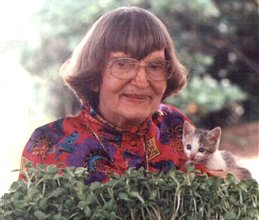 Ann Wigmore (1909-1994)
Ann Wigmore (1909-1994)
Ann Wigmore is best known for her promotion of the health value of wheatgrass. Born in Lithuania in 1909, she was raised by her grandmother, who introduced her to herbal cures. After she joined her parents in the U.S., Wigmore surmounted two personal crises which showed her that natural healing was to be her mission. First, she managed to cure a patientís crushed leg which was to be amputated by applying her knowledge of the healing power of grasses, chlorophyll-rich weeds and flowers. Then, at age fifty, she cured herself of colon cancer using the same methods. Wigmore studied homeopathy and naturopathy at the Anglo-American Institute of Drugless Therapy in London, England. In 1963, she opened America's first holistic health center, the Hippocrates Health Institute in Boston, later renamed the Ann Wigmore Foundation. In Puerto Rico, she opened a second non-profit center for research, teaching and healing. She fought and won several court battles in Boston against the medical establishment, and wrote thirty-five books. Wigmore pioneered the North American success of the superfood wheatgrass, which she used extensively in her therapeutic program. Rich in vitamins, minerals, amino acids, and enzymes, wheatgrass provides pure blood, mental clarity, enhanced digestion, and healthier blood cells. Wigmore was especially aware of the health-building importance of enzymes available in raw foods, and that is why cooked foods are absent from her program.
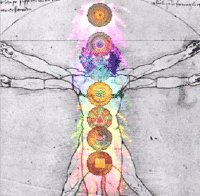 Natural healing explosion...
Natural healing explosion...
As the basic concepts of "natural healing" are disseminated and accepted by consumers, the drug treatment approaches to specific diseases begins to make less and less sense to all but the least interested. The tenets of self-treatment through health responsibility, positive attitudes about the healing power of the body, as well as hope, confidence, and the striving for a vibrant life, are all part of the Natural Healing modality.
Taking responsibility for one's own health is so much more rewarding than handing it over to medical drug therapists, and millions of success cases attest to the effectiveness of doing so. Now, more than ever, we all have access to healing and health naturally!
|

 It was Hippocrates, nearly 2400 years ago, who put forth the most influential ideas about human health and the creating and preserving of it. His observations and reasoning have formed the basic underpinnings of modern medicine, yet his approaches to actual medical conditions would be defined today as "alternative." Hippocrates espoused such "alternative" ideas as:
It was Hippocrates, nearly 2400 years ago, who put forth the most influential ideas about human health and the creating and preserving of it. His observations and reasoning have formed the basic underpinnings of modern medicine, yet his approaches to actual medical conditions would be defined today as "alternative." Hippocrates espoused such "alternative" ideas as:
 Paracelsus was particularly interested in the role earth elements--metals and minerals--played in the human body. He was the first to connect goiter with lead in drinking water. He correctly maintained that minerís disease (silicosis) resulted from inhaling metal vapors. Doctors and clerics at the time maintained that minerís disease was a punishment for sins.
Paracelsus was particularly interested in the role earth elements--metals and minerals--played in the human body. He was the first to connect goiter with lead in drinking water. He correctly maintained that minerís disease (silicosis) resulted from inhaling metal vapors. Doctors and clerics at the time maintained that minerís disease was a punishment for sins.
 Samuel Thomson (1769-1843)
Samuel Thomson (1769-1843) Sylvester Graham (1794-1851)
Sylvester Graham (1794-1851)  Russell Thacker Trall (1812-1877)
Russell Thacker Trall (1812-1877) John H. Tilden (1851-1940)
John H. Tilden (1851-1940) John Harvey Kellogg (1855-1946)
John Harvey Kellogg (1855-1946)  Henry Lindlahr (1862-1924)
Henry Lindlahr (1862-1924) Arnold Ehret (1866-1922)
Arnold Ehret (1866-1922) William Howard Hay (1866-1940)
William Howard Hay (1866-1940)  Benedict Lust (1872-1945)
Benedict Lust (1872-1945) Norman Walker (1867-1985)
Norman Walker (1867-1985) Linus Pauling (1902-1994)
Linus Pauling (1902-1994)  Paul Bragg (1881-1976)
Paul Bragg (1881-1976)  Herbert M. Shelton (1895-1985)
Herbert M. Shelton (1895-1985) Adelle Davis (1904-1974)
Adelle Davis (1904-1974) John Raymond Christopher (1909-1983)
John Raymond Christopher (1909-1983) Ann Wigmore (1909-1994)
Ann Wigmore (1909-1994) Natural healing explosion...
Natural healing explosion...